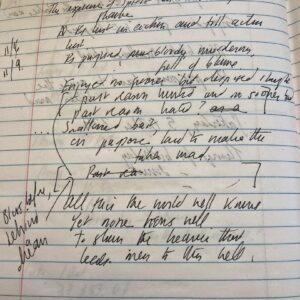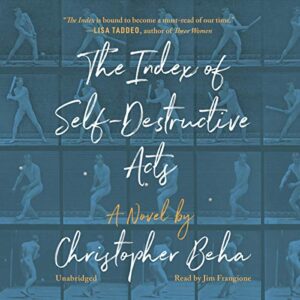One of the abiding narcissistic wounds of my time as a parent is that neither of my children particularly likes to read. Sixteen years into being a mother, I can still get teary thinking about it—as if, in some way incredibly important to me, I have failed.
I’d be lying if I said that the much-decried “screen time” had nothing to do with it: My daughter is a fan of an internet construction game called Roblox for which she is always angling for my laptop, and my son is at the age where much of his social interaction is online—especially in this season when schools are dispersed and camp is cancelled. On top of all that, I work from home, and too often I have just surrendered to get a moment of quiet.
My husband and I have steered what we think is a moderately conservative course: no cable, no cell phone until eighth grade, and a school in another neighborhood. (Instead, we devoted an hour or so a night to watching sitcom reruns from my 1970s childhood, so that at any moment the kids might express a fond recollection about Jack on Three’s Company, or mention that a guy on the corner looks like Rollo from Sanford and Son.)
We HAVE read to the children—A Cricket in Times Square, A Wrinkle in Time, My Side of the Mountain and The Lion, The Witch, and the Wardrobe. Our latest is Island of the Blue Dolphins, with its scrappy Indigenous heroine who sustains herself alone on her home island after she’s accidentally left behind when the rest of her tribe has departed. “You know she’s a badass, don’t you?” my husband says to our daughter, who’s 11. “She’s only about your age.”
But reading is never their first impulse, unlike it is for me—in fact, I’m already thinking about how I can wrap this post up so I can get back to my book.
Part of my reliance on reading stems, of course, from how few diversions there were when I was growing up: There were only three television channels, and in the summer it was too hot to play outside. It was far more fun to turn up the air conditioning and lie on the bed in my sister’s room upstairs with Tess of the D’Urbervilles. And if I’m honest with myself, part of the reason I loved reading was because to disappear into an alternative reality was preferable to the one that I was living—even Tess’s.
Those times when I cry about my children not reading more, I comfort myself by thinking that they see no need for escape, that whatever neuroses they will carry into the therapist’s office, they have found the fabric of everyday life to be joyful, and sufficient.
So that is where I begin, with taking that fabric of everyday life and, as women do, finding its seams with other realities, and with the past—just like some old friends of mine did with their wedding chuppah, which they sewed together from fragments of inherited linens and lace, and which their attendants spread across branches and held above their heads.
But that work of sewing and refashioning takes time, and focus—and problems with inattention were something I had to see in my children before I realized I had problems with them myself. My own absorption in books was as much a part of avoiding Reality as my daughter’s obsession with Roblox (although I still think it was more worthwhile).
Ironically, the thing that has helped me cultivate attention more than anything else has been my relative lack of worldly success. After 15 years, my husband and I still drive second-hand cars, still live in our modest suburb, in our modest house that, sigh, remains “unimproved.” We are not preoccupied with our work in the way so many professionals around us are. Our work is not, and probably has never been, at what I recently heard called the “vertical” stage, with its 60-hour-a-week insistence on—as writer Noelle Oxenhandler once decried—the demands of Do It Now.
My son attends a Benedictine school for boys (that’s where all the money goes), and I see now that we have unwittingly benefitted from “Stability,” one of the hallmarks of Benedictine practice: We’ve sat tight through turnovers of the houses at either side of us, and three for the one across the street; but because we talk about it, and bring it ever to mind, my son and daughter can still bear in mind the nonagenarian neighbor who had escaped from the Holocaust and managed to come to my street when there were still deed restrictions on Jews. Before she died, she gave me her recipe for flammekuchen, written in Bic pen on a sheet of notebook paper, with the admonition that it only be made with Italian plums, and only when they were in season.
They may not love to read, but my children have learned to treat the world itself as a text, and that itself is what I hope will carry them back to books, because they have already been suffused in Narrative.
There’s some evidence that this is happening: My daughter at last dipped into the Goddess Girls series, after studying mythology at school; my son the teenager learned that Aquinas is an easy way for theological point-scoring against his father at the dinner table.
“Do you know about the catacombs, Mom?” my daughter asked me. “I don’t ever want to go there.”
And I said, “But you must! It is where Christians had to worship when they could do so nowhere else. Those buried places are part of who you are.”
I’ve not yet told her this story, but someday I will: One day after we moved into our house, I was down in the basement when I found, hanging in a corner, an old curtain that had been refashioned into a room divider. It was the exact same pattern of curtain that had hung in my sister’s upstairs room.
But that life and that house are gone now. We live among the dead, even as we grow closer to joining their number. I do think—I mean I hope, I pray—we have taught the children to notice.
Caroline Langston was a regular contributor to Image’s Good Letters blog, and is writing a memoir about the U.S. cultural divide. She has contributed to Sojourners’ God’s Politics blog, and aired several commentaries on NPR’s All Things Considered, in addition to writing book reviews for Image, Books and Culture, and other outlets. She is a native of Yazoo City, Mississippi, and a convert to the Eastern Orthodox Church. She lives outside Washington, D.C., with her husband and two children.





